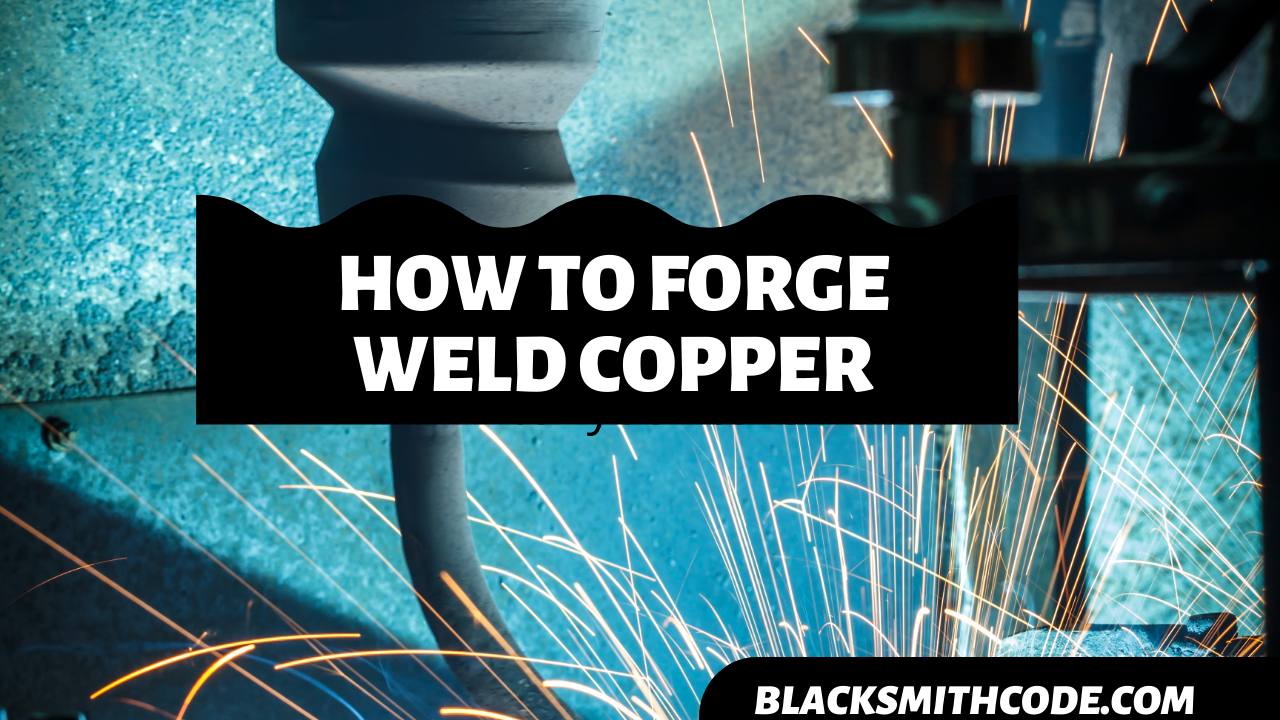Do you know forge welding is one of the basic techniques of blacksmithing? Forge welding of copper is one of the significant highlights of what blacksmiths do.
Copper is one of the easiest materials to work with. It is a soft material; therefore, making it easy to form and shape. However, joining copper can pose a little challenge to inexperienced blacksmiths.
To forge weld copper requires a little technicality and calmness. This technicality is because copper doesn’t weld due to the nature of the material. The difficulty results from the ability of copper to absorb oxygen during heating.
However, blacksmiths usually find ways to forge weld copper against all the odds. This process is one of the ways blacksmiths showcase their technical skills in handling varieties of materials. Nevertheless, you can make forging weld copper easy for you when you gather the right information.
Instructions on How to Forge Weld Copper
Step 1: Gather Your Materials
First off, ensure that you have all the materials you need. Forge welding is not an independent process. It is essential to join two or more parts while forging weld copper.
Step 2: Measurement and Cutting
You should have what you intend to form in mind. If you are familiar with forging techniques or forging a familiar material, this process should not be difficult.
For this step, you will have to cut out each part that you will be forge welding. If the cutting requires you to be precise, do some accurate measurements before cutting out the parts.
Step 3: Joining/Forge welding
Once you already cut out the individual parts, joining them together is the next step. Although there are several methods of joining copper, we will be using the forge welding technique in this case.
Quick Steps
- Prepare your forge and heat the copper to a suitable temperature. Note that forge welding works best when you heat the surfaces to the same temperature.
- Coat the copper with flux. You can concentrate the coating a little bit more on the art that you intend to forge weld.
- Next, overlap the surfaces that you intend to forge weld.
- Strike the overlapping surface or joint with a hammer repeatedly. Ensure that you add a little bit of precision to your hammering. Concentrate the hammering on the overlapped surface.
- Form the joint in a way that allows the flux to flow out.
- To allow the flux out, bevel or slightly round the surface and hammer gently in an outward fashion.
- It would be best if you were conscious of not blasting out the flux with your strikes.
- The hammering process is done gently. The hammer blows should not be as hard as that of shaping or annealing. All you need are gentle and precise strikes.
Note:
For the hammering, you can either make use of mechanical hammering or the manual hammering. The above steps are basically for manual hammering. For mechanical hammering;
- Heat the metal to a suitable temperature and apply the flux.
- Gently overlap the surface and place it between the mechanical hammer and the anvil.
- Regulate the hammering speed and strength to suit your purpose.
Step 4: Cleanup
The major need for the cleanup process is to remove all the welding excess and make it neat. Remove all slags and ensure the welded surfaces will not disfigure your project at the end.
Step 5: Finishing and Polishing
Forge welding is just a step in making supplies with copper. You can proceed with the remaining process once you have successfully joined the parts. The polishing process will further assist in improving the outlook of the project.
FAQs on How to Forge Weld Copper
Question
What can I make out of copper?
Copper is one of the most utilized materials by blacksmiths. They use it for a lot of projects. Aside from using copper itself for projects, blacksmiths also use the alloys of copper, such as bronze and brass.
If you need ideas of projects to do with copper, you can try copper jewelry, plates, drink cans, copper mugs, decorative items, sculptures, and so on.
Question
Is it possible to work on copper without heating?
Yes, you can work on copper without heating it. This process of working without heat is because copper is a soft metal. Working on copper while it is cold can result in a stronger product.
The strength of the result comes from the compression of molecules that occur during hammering. However, overworking on cold copper can make it very brittle
Question
Why does the forge welding process of copper differ from iron and steel?
The difference in the forge welding process of copper and steel is largely because of the material’s internal properties. Copper has a different melting point from steel and iron. Therefore, the forge welding temperature will be different.
You can also work on copper while it is cold, but it is very difficult to work on cold steel or iron. You have to heat them to a certain temperature before they become malleable.
Question
Are there alternative ways of joining copper?
Yes, there are other ways you can join pieces of metal aside from forge welding it. These techniques include brazing, lock seams, riveting, deep drawing, and spinning.
Video
Warnings
Taking precautions is one of the acts that highlight professionalism in blacksmithing. Aside from improving your product, taking precautions will also ensure your safety. The precautions to take while forge welding copper include;
- Ensure that there is adequate and proper ventilation where you are carrying out the process.
- Use all necessary safety gear while carrying out the process.
- You might need to include the use of a respirator.
- Hammer with caution while forge welding.
- Handle all heated materials with tongs and don’t judge the temperature of copper by its color.
- The hammering involved in the forge welding process should be gentle and precise.





